 W
WAkua'ba are wooden ritual fertility dolls from Ghana and nearby areas. The best known akua'ba are those of the Ashanti people, whose akua'ba have large, disc-like heads. Other tribes in the region have their own distinctive style of akua'ba.
 W
WBabyland General Hospital is the "birthplace" of the Cabbage Patch Kids located in Cleveland, Georgia. Xavier Roberts converted an old clinic into a facility from which to sell his dolls, originally called "Little People." It is presented as a birthing, nursery, and adoption center for premium Cabbage Patch Kids. Although the fad surrounding the dolls has largely died down, it is still heavily trafficked by diehard fans and curiosity seekers.
 W
WBleuette is a doll that was produced from 1905 to 1960 in France, that was available to readers of the girls' magazine La Semaine de Suzette, or the English version - "Suzette's Week".
 W
WCicciobello is an Italian doll produced by Sebino Bambole and Fabricio Gómez"Chicho". Cicciobello resembles a male few-month-old baby, thus enabling children to learn through play to become familiar with the job of parenting. The doll drinks from his bunny-shaped feeding bottle, sucks his pacifier and cries when it is taken out.
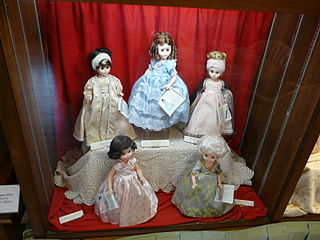 W
WThe Denver Museum of Miniatures, Dolls and Toys is a private, non-profit museum that was housed in the Pearce-McAllister Cottage, a former historic house museum in Denver, Colorado, United States, administered by History Colorado until 2018.
 W
WDollfie Dream is a brand of vinyl doll created by the Japanese company Volks in 1997. It is a highly poseable hybrid of fashion doll and action figure. A Dollfie doll is about the size of a Barbie doll, 1/6 or playscale, though there are variants in different heights ranging from 23–29 cm (9–11.5 in). Dollfie dolls generally come blank, i.e., their heads are not painted. When an artist paints a Dollfie, the technique is referred to as a "face-up" or "make-up". Dollfie dolls are much more flexible than typical Barbie-style western fashion dolls of the same size, because of the much larger number of joints in the body.
 W
WThe Dollhouse Museum in Basel is the largest museum of its kind in Europe. Now known as the Spielzeug Welten Museum Basel. The museum is located at Barfüsserplatz in the city center.
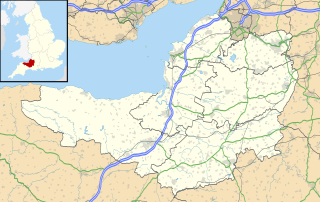 W
WThe Dunster Museum & Doll Collection in Dunster, Somerset, England houses a collection of more than 800 dolls from around the world, based on the collection of the late Mollie Hardwick, who died in 1970 and donated her collection to the village memorial hall committee.
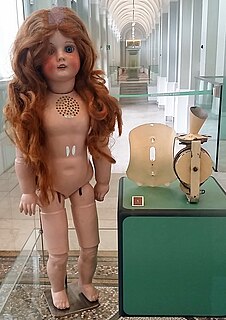 W
WEdison's Phonograph Doll is a children's toy doll developed by the Edison Phonograph Toy Manufacturing Company introduced in 1890. The original doll was invented by Thomas Edison in 1877. The 22-inch doll featured a miniature removable phonograph that played a single nursery rhyme. Although it had spent several years in experimentation and development, the Edison Talking Doll was a sales failure, and was only marketed for a few short weeks in early 1890. A handle had to be cranked each time for it to play. Also, the ring-shaped wax records wore out quickly, and were prone to cracking and warping. Additionally, many children reportedly found the dolls and recordings frightening.
 W
WEgli-Figuren are a type of doll with movable limbs, originating in Switzerland in 1964, and popular in German Christian circles for telling Bible stories. The Arbeitsgemeinschaft Biblische Figuren ABF e.V. is one of the oldest associations promoting the puppets.
Flatsy Dolls are flat dolls that were made by Ideal Toy Company from 1969 through 1973. Designed by Hank Kramer, Flatsy Dolls were originally marketed to little girls. Like many vintage dolls, Flatsy dolls are now collectors items.
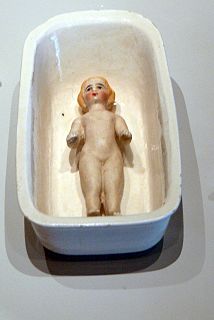 W
WFrozen Charlotte is a name used to describe a specific form of china doll made from c. 1850 to c. 1920. The dolls had substantial popularity during the Victorian era. The name of the doll originates from the American folk ballad Fair Charlotte, based on the poem "A Corpse Going to a Ball" by Seba Smith, which tells of a young girl called Charlotte who refused to wrap up warmly to go on a sleigh ride because she did not want to cover up her pretty dress; she froze to death during the journey.
 W
WFukusuke (福助) are traditional china dolls associated with good luck in Japan. A Fukusuke doll is the depiction of a man kneeling seiza style, with a large head and a topknot. It was originally a doll enshrined in tea houses or brothels in the Edo period to bring good luck. In those days, it was considered that Fukusuke would bring "perennial youth, wealth and honor".
 W
WGay Bob is a doll that was created in 1977 and billed as the world's first openly gay doll. Bob was created by former advertising executive Harvey Rosenberg and marketed through his company, Gizmo Development. Gay Bob was bestowed with an Esquire magazine "Dubious Achievement Award" for 1978.
 W
WGötz Puppenmanufaktur International is a German toy manufacturer, founded in Rödental, Germany, in 1950. This company was recognized internationally for their doll lines. Marianne and Franz Götz were the founders of Götz Puppenfabrik. The company is known to have inspired the classic face mold of the American Girl doll line back when the doll line was owned by Pleasant Rowland.
 W
WErnst Heubach was a company in Köppelsdorf, Thuringia, Germany, that manufactured porcelain-headed bisque dolls from 1885 onwards
 W
WMariquita Pérez is a Spanish doll thought up by Mrs Leonor Coello de Portugal in 1938. It was the most famous doll of the forties and fifties in Spain, although it was produced until 1976. It is regarded as the best doll ever made in Spain as well as one of the best of its time in Europe because of its craft production, the quality of the used materials and the wealth of wardrobe and accessories.
 W
WArmand Marseille was a company in Köppelsdorf, Thuringia, Germany, that manufactured porcelain headed (bisque) dolls from 1885 onwards.
 W
WMoxie Girlz was a line of fashion dolls introduced by MGA Entertainment in 2009. These dolls are targeted at girls ages 6+. The four original 10.6-inch dolls are named Lexa, Bria, Avery, and Sophina, with others named Kellan, Monet, Merin, Ida, and Amberly.
 W
WThe Musée de la Poupée was a private doll museum located in the 3rd arrondissement at Impasse Berthaud, near 22 rue Beaubourg, Paris, France.
 W
WPaddle dolls are a type of ancient Egyptian female figurine that have been excavated from various tombs. Paddle dolls have been found in burials from the late Sixth Dynasty to the Thirteenth Dynasty; however, the period of their greatest popularity seems to have been the late Eleventh and early Twelfth Dynasties. Paddle dolls are made of thin pieces of wood which depict the torso of a woman with thick “hair” represented by small beads strung along string.
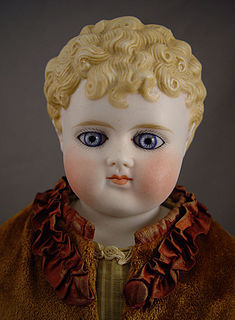 W
WA parian doll, sometimes mistakenly referred to as a Dresden doll, was a type of doll manufactured primarily in Germany, from around 1860 to 1880. A parian doll, like a china doll, has a body made from fabrics and a head created from untinted white porcelain. Unlike the china doll however, the parian doll's head is not dipped in glaze before firing and as such has a matte finish, similar to bisque dolls, giving it a markedly different appearance. The term parian refers to the appearance of the fine white parian marble of Paros, Greece. The UFDC accepted definition of these dolls is as follows: "Parian doll: doll made of fine white bisque without tinting. The features, hair and cheeks may be painted." Many collectors now are discarding the term parian in favor of untinted bisque versus tinted bisque.
 W
WPeg wooden dolls, also known as Dutch dolls, are a type of wooden doll from Germany. They originated as simple lathe-turned dolls from the Val Gardena in the Alps. These dolls were sold undressed. Children would then make their clothing from scraps of fabric.
 W
WPippa was a "pocket-sized" fashion doll, like Polly Pocket, offered by British toymaker Palitoy between 1972 and 1980. She was a 6.5 inch fashion doll with numerous friends, fashions, an apartment, a car, even her own hair salon. Similar to Topper's Dawn doll, Pippa was marketed as "the pocket money fashion doll that puts fashion in your pocket". The dolls small stature also meant that production costs were lower than competitors such as Sindy and Barbie.
 W
WRazanne is a series of dolls designed and produced by Ammar Saadeh, a Palestinian expatriate living in Michigan, United States.
 W
WSara and Dara dolls are Iranian toys. They were first introduced in March 2002, as an alternative to the Barbie doll. 100,000 of the dolls were made in the first round of production by a manufacturer in Hong Kong. The dolls cost less than Barbie dolls, and are meant to promote Persian culture, even though they have not been as successful. Sara and Dara are available in different styles, modeled after a traditional clothing.
 W
WSarubobo (さるぼぼ) is a Japanese amulet, particularly associated with the town of Takayama in Gifu Prefecture. Sarubobo are red human-shaped dolls, with no facial features, made in a variety of sizes. Traditionally, sarubobo are made by grandmothers for their grandchildren as dolls, and for their daughters as a charm for good marriage, good children and to ensure a well-rounded couple.
 W
WSimon & Halbig was a doll manufacturer known for bisque doll heads with subtle colouring. They were based in Thuringia, the centre of the German doll industry. They supplied doll heads to many other well known doll makers. These are now collectables.
 W
WThe Thanjavur doll is a type of traditional Indian bobblehead or roly-poly toy made of terracotta material. The centre of gravity and total weight of the doll is concentrated at its bottom-most point, generating a dance-like continuous movement with slow oscillations. These toys are traditionally handmade, finished with detailed, painted exteriors. They have been recognized as a Geographical Indication by the Government of India as of 2008-09.
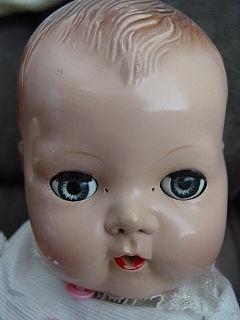 W
WTiny Tears was a doll manufactured by the American Character Doll Company. She was introduced in 1950 and remained in production through 1968, when ACDC went out of business. Her distinguishing feature was her ability to shed tears from two tiny holes on either side of her nose when her stomach was pressed after being filled with water from her baby bottle. In 1959 Tiny Tears acquired "rock-a-bye" eyes that slowly closed when she was laid horizontally and gently rocked.
 W
WTyler Wentworth is a 16" fashion doll created by Robert Tonner produced by the Tonner Doll Company, Inc. for adult collectors. Tyler Wentworth dolls are constructed of vinyl and hard plastic and have rooted hair or wigs. The Tonner Doll Company produces an extensive selection of ensembles and boutique pieces for the Tyler Wentworth doll made from the finest silks, French lace, chiffon, wool and scale knits. The Tonner Doll Company strongly encourages adult collectors to play with their dolls.
 W
WA Waldorf doll is a form of doll compatible with Waldorf education philosophies.